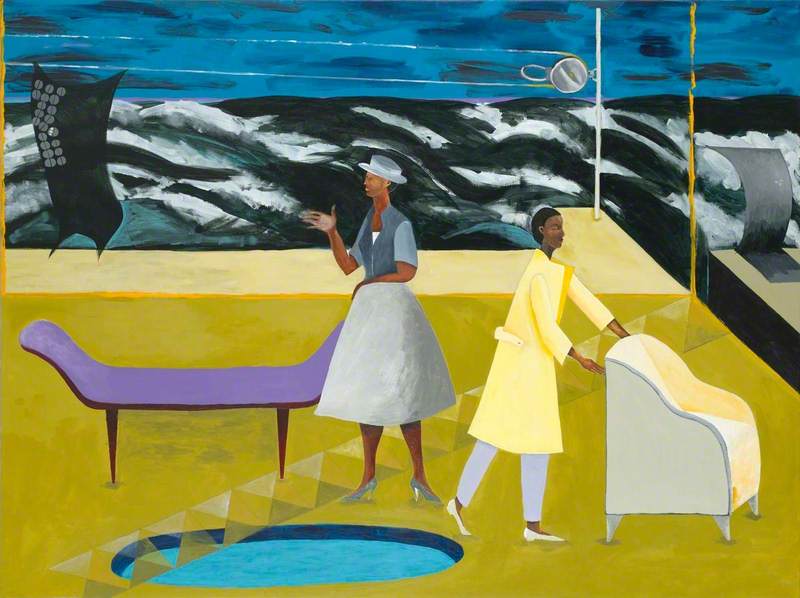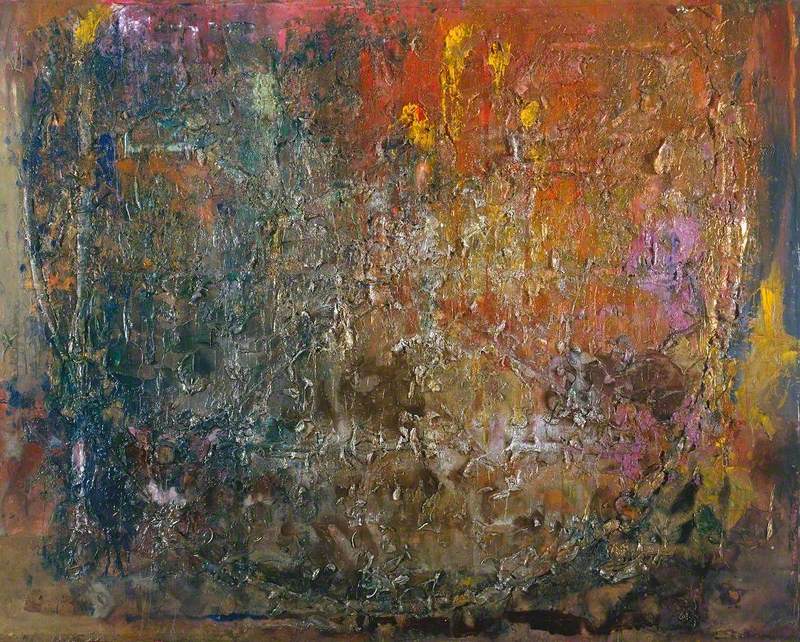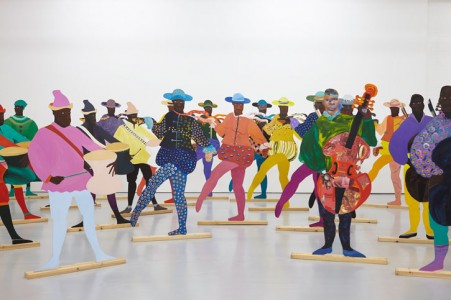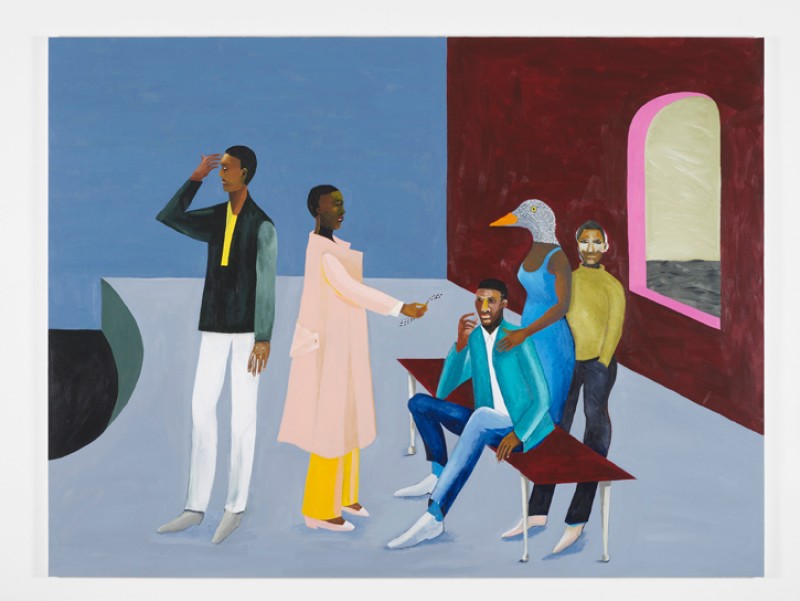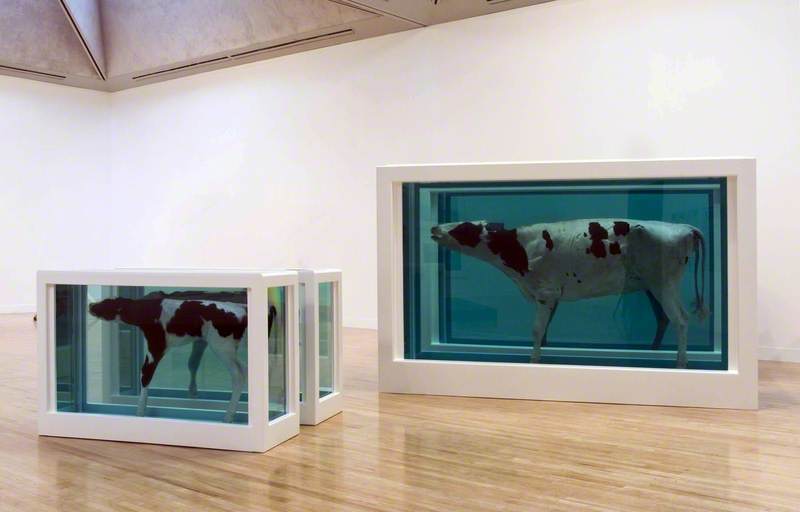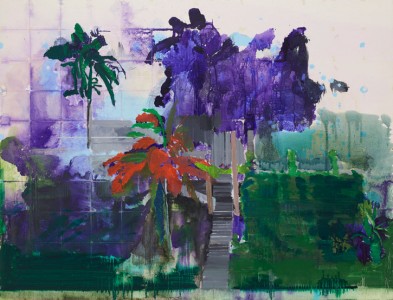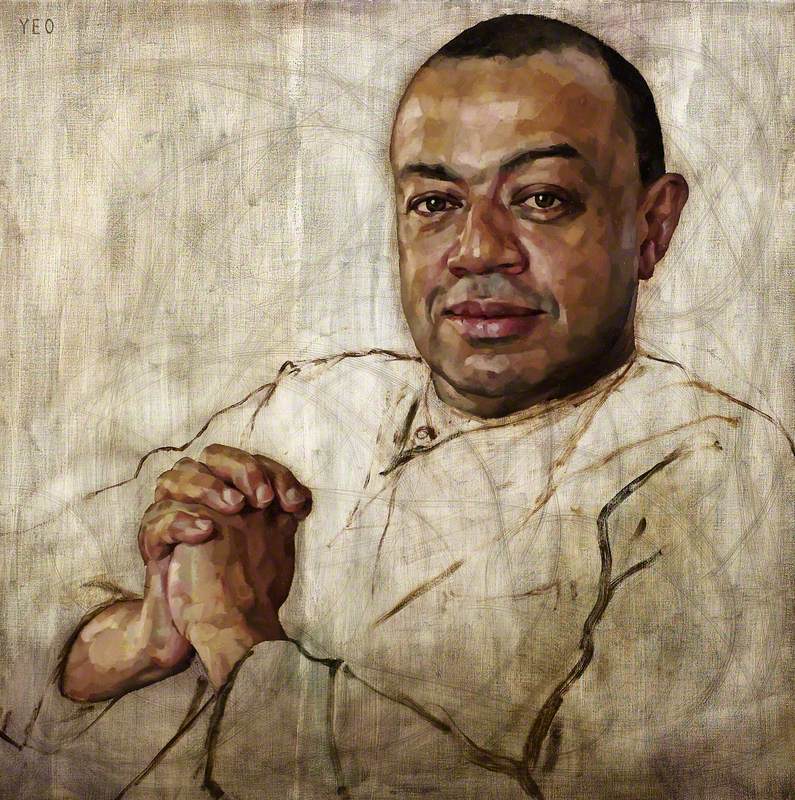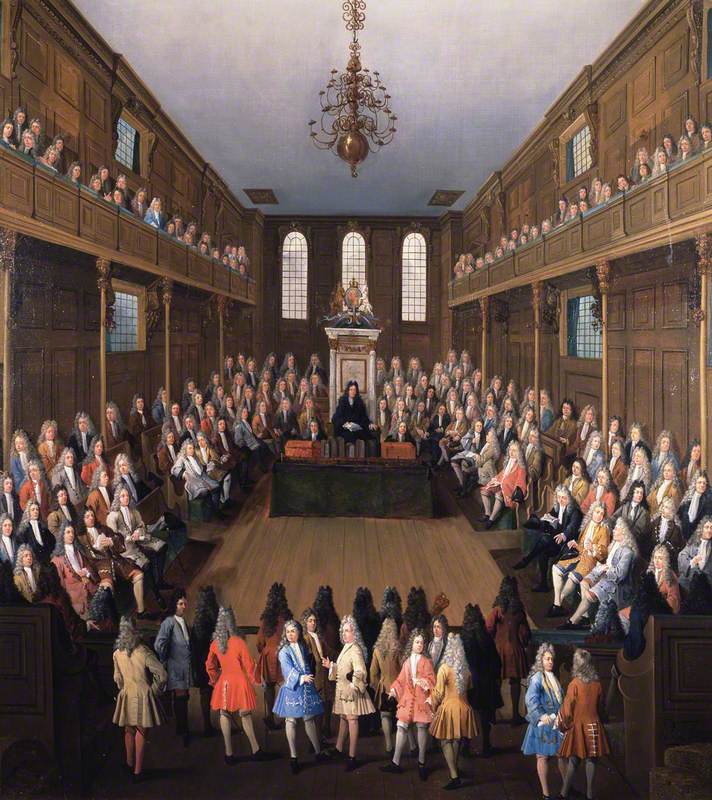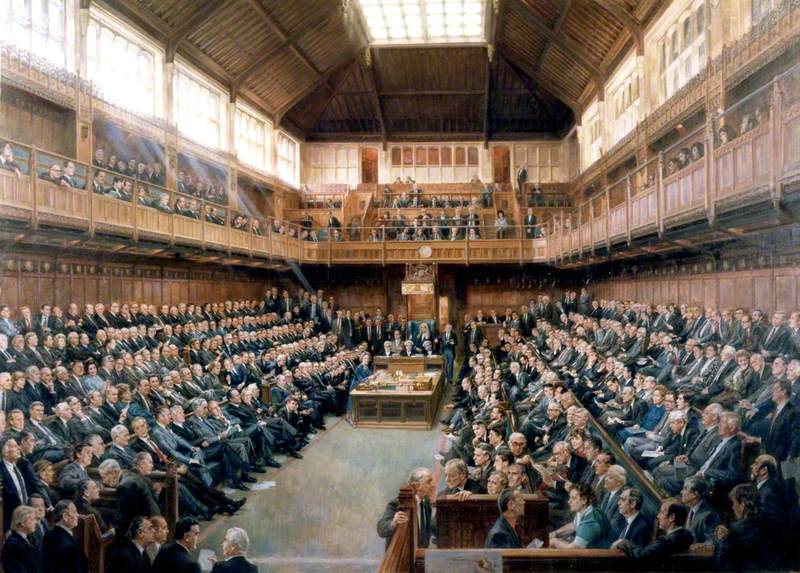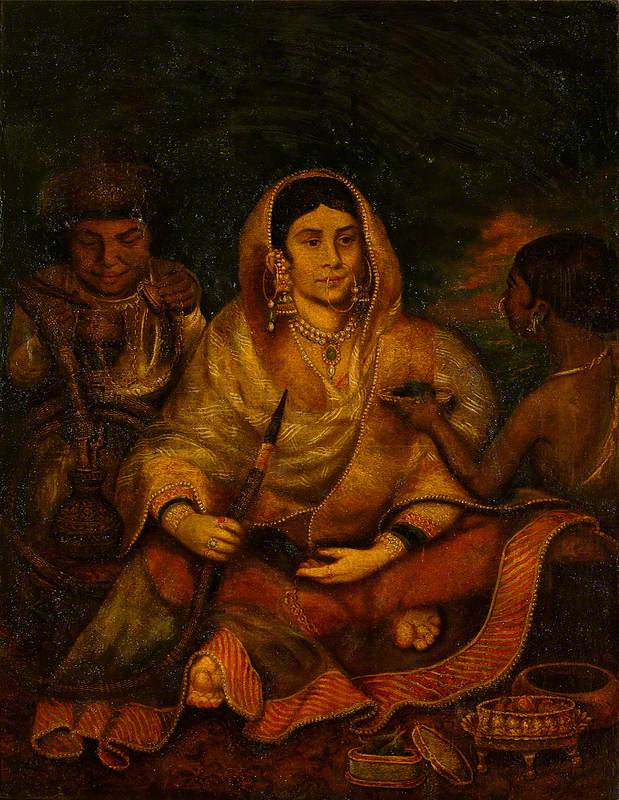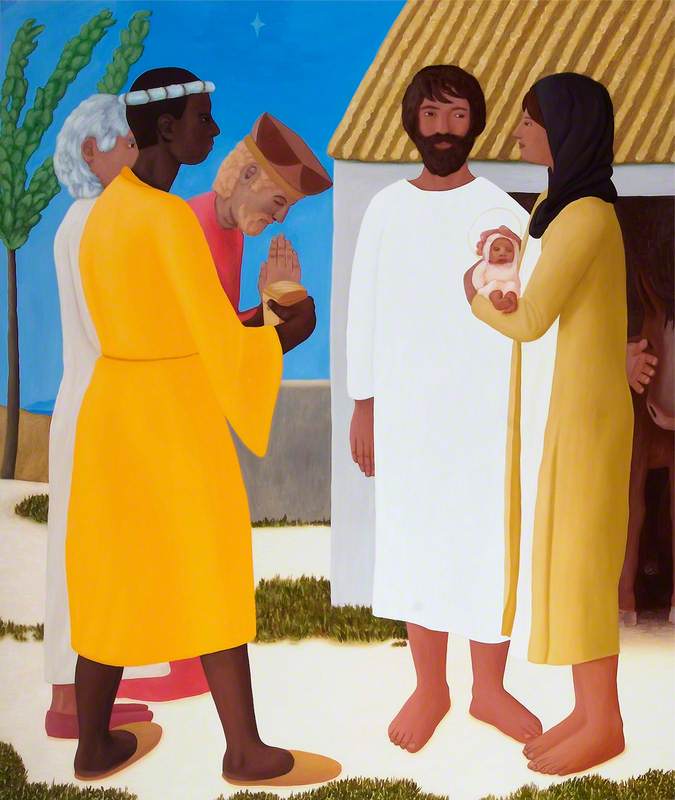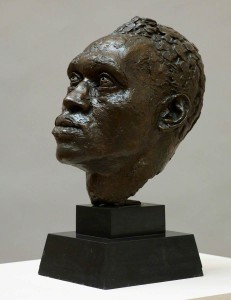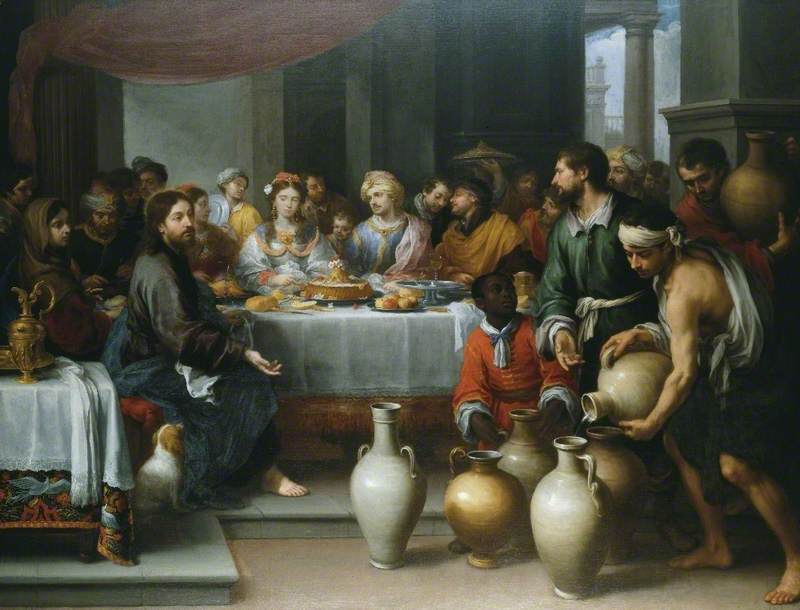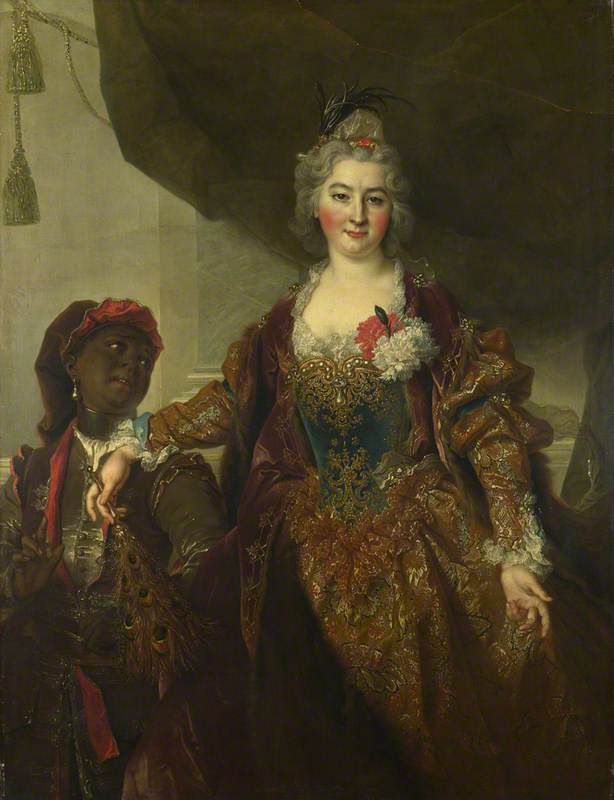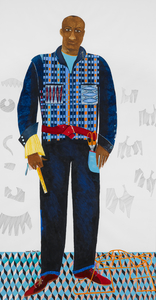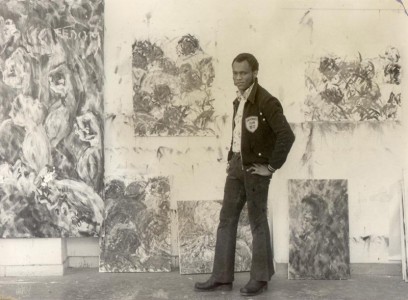A striking scene of two black women in a theatrical setting against the backdrop of a raging sea draws us into the complex practice of Lubaina Himid. In Le Rodeur: The Pulley, the 2017 Turner Prize winner marries human relationships with a broader shared cultural and political history.
Himid's work used to hang in the office of former Culture Secretary Oliver Dowden. It was acquired by the Government Art Collection in 2017, since when it has also been exhibited at 10 Downing Street and, in 2019, shown at Tate Britain.
This work is part of a series of paintings by Himid from 2016 titled 'Le Rodeur'. It brings attention to the tragic 1819 journey of a French slave ship of that name. The ship's occupants were hit by an illness that turned almost all on board blind, leading to 36 enslaved West Africans being thrown overboard because, if blind and unable to work, insurance payments meant they were worth more dead than alive to the unspeakable owners.
The pulley referred to in the title, and visible on the top right of the painting, is particularly significant. By definition, a pulley's function is to aid the transfer of power. Its presence in this work speaks not only of European colonial power but also of the shifting power dynamics on a ship on which almost all of the enslaved people and crew died.
The painting further touches on the intricacy of emotional relationships between women who often in Himid's work are depicted either alone or in pairs, as in this painting. The abstract patterning that cuts across the inset pool in the foreground is another distinctive feature.
Himid has commented on the influence of her mother, a textile designer, who regularly took her to London museums, notably the Victoria and Albert Museum. Le Rodeur: The Pulley is a compelling example of a practice that reinserts black narratives and representation into the cultural sphere.
Claire FitzGerald, Curator, Government Art Collection
